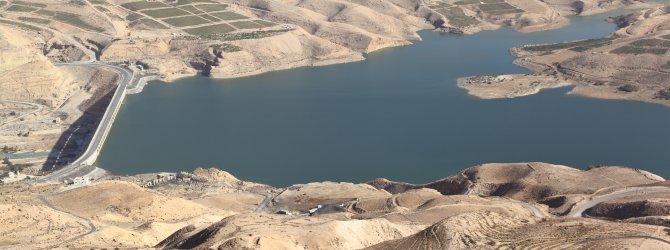-
Troubled Waters – Daesh and Water in the Conflicts in ...
Troubled Waters – Daesh and Water in the Conflicts in Syria and Iraq

4,500 years ago, on the banks of the Tigris, what might be described as the world’s earliest water conflict took place between the Sumarian city-states of Lagash and Umma. Fast forward to 2016, and again battles are being waged for control over the precious resource in the WANA region. Water is being used as a target and a weapon by different actors – state and non-state – in the Syrian and Iraq conflicts.
Water is key to Daesh’s long-term strategy to build a Caliphate. As the group has transitioned to undertaking state-like activities (taxation and provision of services), this has necessitated water management. With one hand the group has given, and with another it has taken away – provision of water (along with electricity, humanitarian aid, bread, electricity) is part of its social outreach, enabling the group to gain favour with populations. But at the same time it has flooded villages, threatened to do the same to Baghdad, and restricted water to towns. For instance, in February 2014, the group closed 8 of the 10 gates of a dam in the Nuaimiya area causing flooding upstream, an apparent effort to dislodge troops undertaking a siege on the city of Falluja. Civilians – for whom water is not a weapon, but instead a lifeblood – are caught in the middle. Because of the Nuaimiya flood, many fled their homes to seek safer ground.
Even the brief takeover of water resources, such as the Daesh’s seizing of the Mosul Dam in Iraq in August 2014, are enough to do serious structural damage. The Mosul Dam has been unsound for a long time, due to the “extensive presence of soluble rock formations”. Recently, warnings over dam failure have increased, with the US Embassy releasing a warning that a breach may occur, and urging residents to move away from the banks of the Tigris. It goes without saying that the consequences of a failure of the Mosul Dam would be catastrophic – it could lead to a complex emergency of an immense scale with some estimates predicting 21 meters of water could flood Mosul, with downriver Tikrit, Samarra and Baghdad also affected by flooding.
As of November 2015 ISIS had control of six dams in Syria and Iraq. According to some sources the organization has been using dams as protection from airstrikes, keeping their high-value hostages and senior Daesh members there. The thinking behind this is that the dams won’t be attacked because of the immense destruction that could be unleashed if the dam was damaged.
Daesh are not the only ones using water as a weapon and target. In Aleppo, in May 2014 the pumping station ceased working – rebels and regime blamed each other; then in June the same year Jabat al-Nusra, Al Qaeda’s affiliate in Syria, bombed the major water pipeline. The resulting water crisis affected over 2 million people. Rebels in Ain al-Fijah also used control over the spring there to punish downstream Damascus.
The use of water as a target and a weapon is highly problematic for a number of reasons. Firstly without access to clean water and sanitation, communities face food security and water security crises, while access to energy can also be imperiled (because of the hydro-electricity generated through dams). It is likely that severe and persistent water insecurity will intensify forced migration (including internal displacement) in Iraq and Syria and lead to an increase in the casualty count. Importantly, destruction of water infrastructure will compromise efforts to rebuild Syria and Iraq after the eventual cessation of conflict.
While using water as a short-term tactical weapon in war might seem to pay off for combatants, the longer-scale implications are dire. Daesh’s strategy of using water to buy support, and at the same time as a weapon, may not be sustainable. In fact, it might be the groups’ two personalities that cause its eventual dissolution – on one hand it is engaged in state-building efforts, but on the other hand it is a militant jihadist organization, with an expansionist vision, engaged in fighting on a number of fronts. It may be that it can do neither of these things well at the same time. Indeed, a strategy that is based on using water as a weapon could come back to hurt the group later, particularly if it compromises their ability to provide vital services such as water and electricity to civilians in Daesh territory. If this is the case, any support it has gleaned from local populations will be short-lived.
One scholar has even suggested that while Daesh may not have any intention to destroy a dam right now, they may in the future do exactly this, if they are at risk of a decisive military defeat. Indeed, I believe this is fitting with their apocalyptic vision, and as Tobias von Lossow describes it, such an act would be “a last display of power”.
Water – who controls it, who has access to it – will no doubt continue to be a driving force in the Syria and Iraq conflicts and may even determine the outcome of the war. However the question remains: at what cost.

